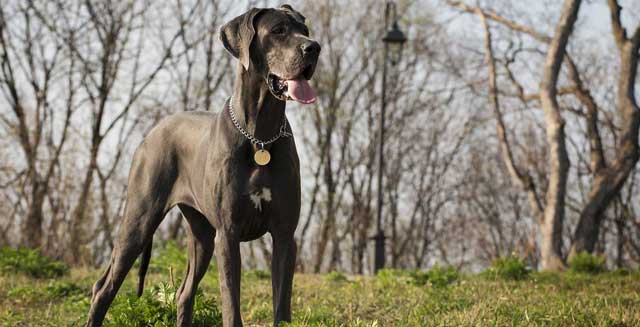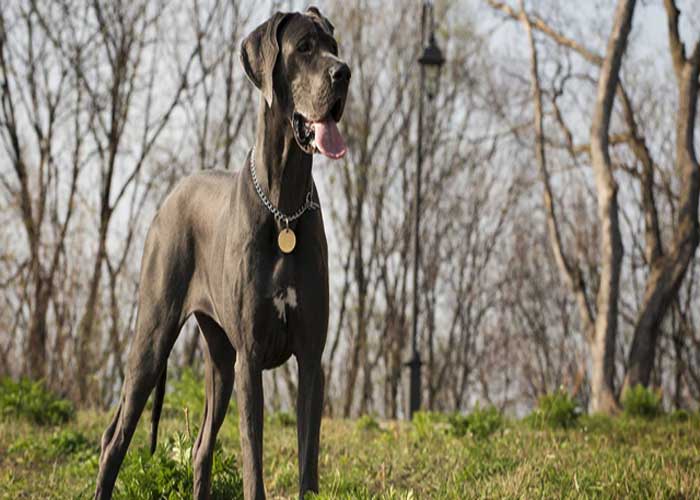Health and History: Why Your Great Dane Needs a Great Sleep
As a good and caring dog owner, you want the best for your dog. This doesn’t merely mean providing it with things that will make it happy, but also learning about what it needs to live as long and healthy a life as possible. That’s why you should choose a dog bed from a company you can trust to keep both the health and happiness of your dog in mind.
Great Dog Beds for Great Danes
One of the reasons that dog owners appreciate beds from Mammoth Dog Beds is that they’re built in response to extensive research on the sleeping habits and behaviours of dogs accumulated over a span of 20 years. Whether you read our dog bed customer testimonials or contact us today to find out more about what dog owners find so wonderful about our beds, you’ll find it easy to see how beneficial it is for Great Danes to sleep on a bed that’s made especially with the health and comfort of large dog breeds in mind.

The Importance of Accurate Information
Learning about the needs of your dog always has a lot to do with learning about the unique requirements of its particular breed. Since the Great Dane is the world’s tallest dog, there’s probably no other breed for whom this advice rings as true. All large dogs have special health concerns and special needs that accompany those issues, but with the largest breed, it’s especially important that you get your facts straight by gleaning real medical advice on the Great Dane rather than heeding the folk wisdom of laypeople.
Great Dane History
Great Danes possess a balance of physical features and positive mental attributes that are unusual to find in any other breed of dog. These traits, like friendliness and intelligence, make the Great Dane one of the best dogs for a family to own. To better understand how the Great Dane came to become such a wonderfully stout yet lovable dog will necessitate a deeper look into the history of its breeding and relationship to people.
The Early Great Dane
While there is evidence of the existence of Great Danes dating all the way back to depictions on ancient art, the breed went through a good deal of change before it started to resemble the dogs that we now know and love. It is widely believed that Great Danes were originally bred from crossing an English Mastiff with an Irish Wolfhound and were fierce creatures used in the hunting of wold boar.
This early version of the Great Dane had to be large and tough because the boar was one of the fiercest animals hunted at that time in continental Europe. The positive side of this dangerous lifestyle is that due to their abilities as great hunters, Great Danes enjoyed special treatment, including good food and better sleeping conditions – which is especially important to this breed!
Changing Characteristics
As hunting dogs, early Great Danes weren’t just powerful, they also had to be highly intelligent and resolute. For hundreds of years, the Great Dane was selectively bred for the purpose of hunting dogs, but eventually they became so prized that their role turned towards the more privileged position of guarding the members of noble and aristocratic families within their own homes.
Eventually, this led to Great Danes becoming more appreciated for their regal appearance than for their hunting talents. You might consider the breed as being so successful at being good companions that they were granted to right to retire from the hunting life altogether to assume the role that most dogs enjoy today as an important part of the family.
Modern Great Danes
By the 1800s, the Great Dane was seldom considered as a hunting animal and was mostly bred for select traits that better suited family life. While retaining its most positive characteristics, such as intelligence, the modern Great Dane is now much less aggressive, having been selected to be docile, affectionate, and generally good tempered.
It might seem surprising that a breed of dog could transition so well from an aggressive hunter to a friendly family dog, but the Great Dane actually enjoys a long history of preferential treatment, given that the best hunting dogs were always highly prized and richly rewarded. Today’s Great Dane strikes an extraordinary balance between desirable physical and mental characteristics unmatched by any other breed.
Great Dane Health
One of the most important things that you can learn about your dog, especially when purchasing a new dog bed, is what kind of medical ailments are common among that breed. Whether you’re interested in learning more about Great Danes or need to learn more about other large dog breeds and their needs, you can check our blog for further information.
While the history of the Great Dane has led it to become an extraordinary breed of dog unlike any other, it also resulted in some unfortunate side effects regarding its health. The Great Dane commonly suffers from a number of physical ailments – many of which have to do directly with its large size. These include:
- Obesity
- Bloat
- Osteosarcoma
- Hip Dysplasia
While home therapy should never be considered as a replacement for professional veterinary care, dogs with any medical issues will enjoy greater comfort when provided with a high-quality bed that has been made to match its size. What the history of the Great Dane teaches us about its healthcare and general living needs is that breeding has resulted in some wonderful benefits, but also some specific ailments.
Great Danes have always been valued for their exceptional size, but due to selective breeding to promote this massive size, they are low energy dogs and require a significant amount of quality rest. Help you dog live a healthier and happier life with a quality dog bed best designed according to quality research to your dog’s exact specifications. You can learn more about a Great Dane dog bed offered from Mammoth on this website.
